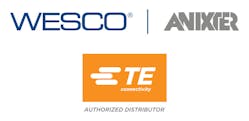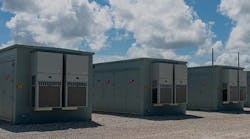The Challenge
A large solar farm being constructed in the Midwestern U.S., operated by one of the country’s largest power generation companies, has had to contend with a variety of site conditions that create routine delays and pervasive worker turnover. Construction of the 140-MW solar farm, involving 350,000 solar modules, with a maximum voltage drop of 1.5%, was contracted to a large global engineering, procurement and construction (EPC) company selected by the solar farm owner. The on-site installation has involved more than 250 on-site workers over a period of more than a year.
Located in a former rice patty field in rural Arkansas, the site is prone to flooding, routine thunder and lightning storms, seasonal tornadoes and extended heat waves. Recently, the COVID-19 pandemic created additional delays that threatened to put the entire installation several months behind schedule. To combat the threat of frequent standing water at the site which was making the installation more labor-intensive, the wiring and cabling are installed within above-ground cable hangers running East-West and North-South. “In challenging sites like this, the labor costs tend to add up really quickly,” says the EPC’s on-site Project Manager.
To overcome these challenges, the EPC selected TE Connectivity’s Solar Customizable Trunk Solution (CTS). The CTS system uses a centralized trunk-bus architecture that provides a significantly less complex overall wiring architecture compared to the traditional approach used by large solar farms, which typically relies on hundreds or thousands of individual combiner box connections.
The Solution
TE Connectivity’s CTS system greatly simplifies the installation requirements, thanks in part to its use of Gel Solar Insulation Piercing Connectors (IPCs), which have a long, proven track record in traditional power generation settings — but have only recently begun to be used in solar power generation facilities and have a patent pending for this application.
The small piercing blades of the IPCs penetrate the insulating jacket of the cable, establishing the electrical connection to the conductor beneath the insulation, without the need for labor-intensive insulation cutback or stripping by field technicians, who only need a socket or impact wrench to do their work. The Gel Solar IPCs used in the TE Connectivity system include a protective gel box enclosure, which is essentially a protective clamshell filled with TE’s Raychem Powergel sealant. This helps give the connection protection from moisture ingress for its lifetime.
Using this system, on-site technicians report that they require an average of only two minutes to install two IPCs. This includes cleaning the cable, testing it for continuity, setting the IPCs by hand tightening, using a cordless impact wrench to tighten the shear bolt connectors to the specification, applying the gel box enclosure, testing the continuity at the jumper connector, and cutting the end string to length. Installation of the IPCs is further simplified thanks to the use of a shear bolt head, which shears off automatically once the pre-engineered torque is achieved and the blades of the connector have simultaneously penetrated the cable insulation and reached the conductor strands. This shear bolt portion of the installation is completed in just 20 seconds for a single installation, as experienced by the installers, thus reducing the required on-site labor time by more than 40%, compared to using the traditional approach.
The Gel Solar IPCs are installed after the trunk bus wire pairs are pulled for each array grouping. This enables the on-site installer to pull 500 kCMIL cables for the entire path to the inverted pad from the array groupings, thus streamlining the installation and meeting the voltage drop requirement. This also provides real-time configurability. If the row to row tracker spacing requires a last-minute change due to site conditions, this can easily be accommodated by the CTS system because the Gel Solar IPCs are installed exactly where they are needed.
“That speed of installation is incredible,” says the Project Manager at the site. “The traditional approach can easily require 20 minutes for both the positive and negative ends.”
The Outcome
TE Connectivity was able to greatly reduce the time and labor required to install the electrical portion of this Arkansas solar farm. One installer at the site noted: “We are able to install 10 IPCs and terminate a Trunk Bus Disconnect (TBD) to close a circuit in less than 20 minutes, so it’s been an extreme time saver.”. Moreover, trenching was not needed with the above-ground installation, adding to the time savings.
"Installation has been faster than anything that I have ever used, and the time required to install two of the major IPCs here has been shorter than that required to install a single PV connector."
Another important benefit of the CTS system is that it reduces the number of connections, which helps to minimize current leakage and voltage drop across any entire solar farm. For this particular project, the CTS architecture is expected to help the solar farm meet its target 1.5% maximum voltage drop for the entire DC-collector distribution network.
Thorough on-site training for the installation crew, coupled with clear documentation and clear communication throughout the project “have helped to smooth the overall installation and handoff, and led to zero complaints,” said the Project Manager for the site.
In the face of pervasive project delays, the EPC team had initially estimated that the entire installation would likely run three months behind schedule. However, thanks to the time savings delivered by the CTS, the team now expects to wrap up the installation just a week or two past the initial delivery date.
Learn more at: TE.com/solar
Sponsored by:



